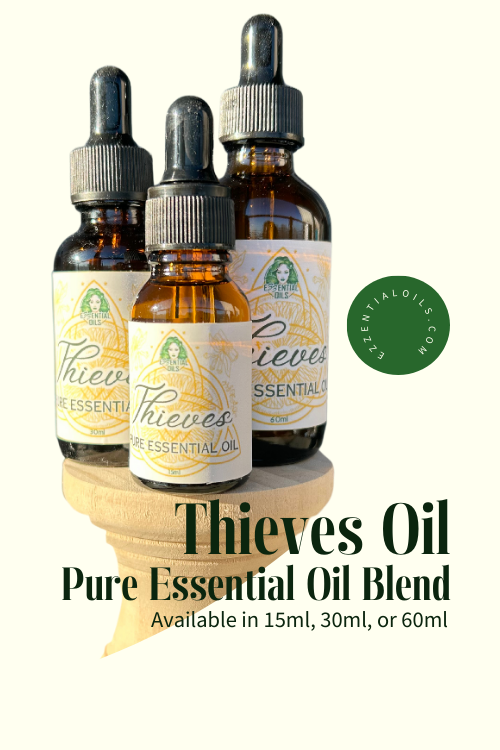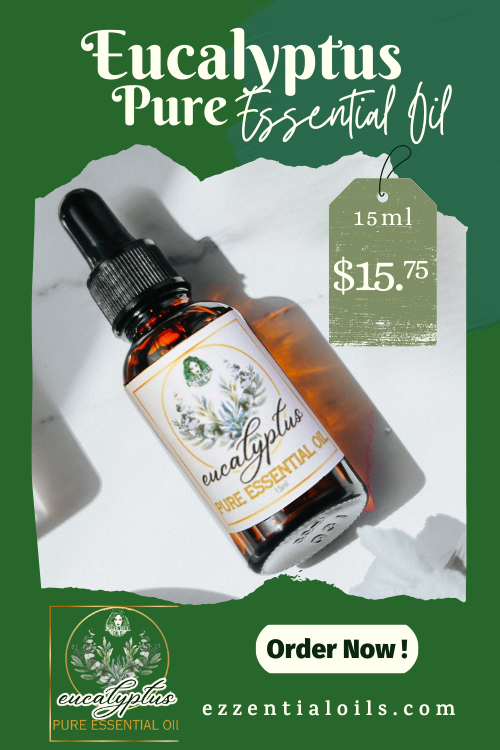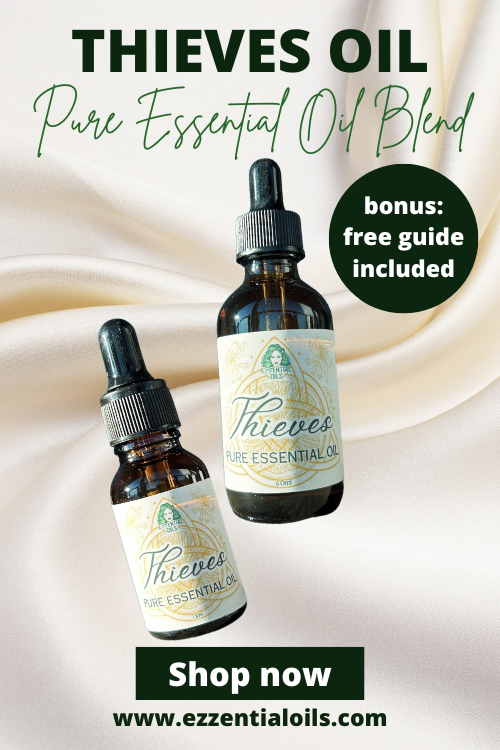The Essence of Essential Oils:
Extraction Methods and Best Practices
Essential oils are cherished for their ability to enhance well-being, connect us to nature, and elevate our daily routines with their aromatic and therapeutic properties. But have you ever wondered how these fragrant treasures are created? Understanding the intricate processes that bring essential oils from plants to bottles can deepen your appreciation for their value and empower you to make informed choices.
For anyone passionate about aromatherapy, knowing how essential oils are made isn't just interesting—it's essential. Extraction methods directly impact the purity, aroma, and therapeutic benefits of the oils you use. Whether you're an experienced aromatherapist, a curious enthusiast, or someone simply looking to add natural solutions to your lifestyle, understanding these methods can help you select oils that align with your values and goals.
Safe use and proper handling are vital for enjoying the benefits of essential oils without risk. By learning about practices such as dilution, storage, and sustainability, you can confidently incorporate essential oils into your routine while respecting the environment and your body's unique needs.
From steam distillation to cold pressing, and even the cutting-edge techniques used today, we'll guide you through the essential knowledge to help you recognize quality and avoid synthetic alternatives. Whether you're here to elevate your expertise or simply savor the essence of essential oils, this article will inspire and inform your journey.
The Essence of Essential Oils: Extraction Methods and Best Practices
How Are Essential Oils Extracted?
The journey of essential oils begins with extraction—the process of capturing the aromatic compounds from plants. This step is crucial because the method used significantly affects the purity, potency, and therapeutic properties of the final product. Let's explore the most common extraction methods:
Steam Distillation Steam distillation is the most widely used method for extracting essential oils. It involves passing steam through plant material, which causes the aromatic compounds to evaporate. These vapors are then condensed back into liquid form, separating the oil from water. This method is ideal for delicate flowers and herbs like lavender and chamomile, as it preserves their therapeutic properties.
Common Plants:
Flowers: Lavender, Chamomile, Rose Geranium
Herbs: Basil, Oregano, Thyme, Sage
Resins: Frankincense, Myrrh
Woods: Sandalwood, Cedarwood
Reason for Use: The heat and steam allow volatile compounds to separate from the plant material effectively while maintaining their therapeutic properties.
Cold Pressing Cold pressing is primarily used for citrus oils such as orange, lemon, and grapefruit. The process involves mechanically pressing the peels to release their essential oils. This method is simple and does not involve heat or chemicals, which helps retain the fresh, vibrant aroma of citrus oils.
Common Plants:
Citrus Fruits: Orange, Lemon, Lime, Grapefruit, Bergamot, Mandarin, Yuzu, Bitter Orange, Tangerine, Kaffir Lime, Calamansi, Sweet Orange, Finger Lime, Pomelo
Reason for Use: The process avoids heat, retaining the fresh, bright aroma and preserving the fragile compounds in citrus peels.
Solvent Extraction For plants that are too delicate for steam distillation, such as jasmine or rose, solvent extraction is often used. This process involves using a solvent to dissolve the plant's aromatic compounds, creating a concentrated substance called an absolute. While effective, this method may leave trace amounts of solvent in the final product, making it less suitable for therapeutic uses.
Common Plants:
Flowers: Jasmine (absolute), Rose (absolute), Vanilla (absolute), Tuberose (absolute), Mimosa (absolute), Lotus (absolute), Gardenia (absolute), Linden Blossom (absolute), Violet Leaf (absolute), Honeysuckle (absolute), , Cistus (resinoid)
Exotic Resins & Plants: Acacia, Benzoin (resinoid), Peru Balsam (resinoid), Oakmoss (absolute), Labdanum (resinoid)
Reason for Use: Some flowers and plants are too delicate or yield very low amounts of essential oil through distillation. Solvent extraction is often used for perfumery-grade oils.
CO2 Extraction CO2 extraction is a newer, more advanced method that uses pressurized carbon dioxide to extract essential oils. This technique operates at low temperatures, preserving delicate compounds and producing highly concentrated, pure oils. It's commonly used for oils like frankincense and ginger.
Common Plants:
Herbs: Chamomile, Calendula, Yarrow, Helichrysum
Roots: Ginger, Turmeric, Vetiver
Spices: Cardamom, Clove, Black Pepper
Woods/Resins: Frankincense, Myrrh, Copaiba
Reason for Use: This method preserves a wider range of compounds, resulting in oils that are richer, more aromatic, and often closer to the plant's natural profile.
Maceration and Enfleurage Traditional methods like maceration and enfleurage are rare today but were historically used for flowers like tuberose. These processes involve steeping plant material in fat to capture its essence. Although labor-intensive, they produce highly fragrant extracts prized for perfumery.
Common Plants:
Delicate Flowers: Tuberose, Jasmine, Frangipani, Orange Blossom, Gardenia
Reason for Use: These traditional methods were used for highly fragile flowers before modern technology, resulting in highly fragrant oils for perfumes.
The Importance of Purity and Quality
Understanding extraction methods helps you recognize high-quality oils and avoid synthetic or adulterated products. Pure essential oils should be derived entirely from natural plant materials, without additives or fillers. Look for oils labeled as 100% pure, therapeutic-grade, and sourced responsibly. Reputable brands often provide detailed information about their sourcing and production processes, ensuring transparency.
Sustainability in Essential Oil Production
As essential oils grow in popularity, sustainability becomes an increasingly important consideration. Ethical harvesting practices, organic farming, and eco-friendly extraction methods all play a role in preserving plant species and minimizing environmental impact. For example, some companies invest in reforestation projects or partner with small farmers to ensure sustainable sourcing. Choosing brands with a commitment to the environment allows you to enjoy essential oils guilt-free, knowing your choices support the planet.
Best Practices for Using Essential Oils
To fully enjoy the benefits of essential oils, it's essential to use them safely and effectively. Here are some best practices to keep in mind:
Dilution: Essential oils are highly concentrated and should always be diluted before applying to the skin. Use a carrier oil, such as coconut or jojoba oil, to ensure safe application. A common ratio is 1-3 drops of essential oil per teaspoon of carrier oil.
Patch Testing: Always test a small amount of diluted oil on your skin before using it more widely to ensure you don't experience an allergic reaction.
Proper Storage: Store essential oils in dark glass bottles, away from sunlight and heat, to maintain their potency.
Avoid Ingestion: Essential oils should not be ingested unless guided by a qualified professional. Even small amounts can be toxic when taken internally.
Know Your Oils: Learn the specific properties and precautions of each oil you use. For example, citrus oils can increase sensitivity to sunlight, while others like eucalyptus may not be suitable for children or pets.
The Future of Essential Oils
With advancements in extraction technology and growing awareness of sustainability, the essential oil industry continues to evolve. CO2 extraction and other innovative methods are leading the way in creating purer, more potent oils while reducing environmental impact. As more people discover the therapeutic benefits of essential oils, education and responsible usage will remain vital for their continued appreciation and integration into wellness routines.
Essential oils are much more than their lovely aromas—they are a bridge to nature's healing power. By understanding the processes that bring these oils to life and practicing safe, sustainable use, you can make the most of their benefits while honoring the earth that provides them. Whether you're diffusing lavender to unwind after a long day or blending your favorite oils for a rejuvenating massage, your journey with essential oils begins with knowledge. Armed with this guide, you're well on your way to appreciating their essence in every sense of the word.
Enjoy the journey, and let the essence of essential oils transform your life!
Please note, the International Federation of Aromatherapists do not recommend that Essential Oils be taken internally, unless under the supervision of a Medical Doctor, who is also qualified in clinical Aromatherapy. In addition, Essential Oils must be properly diluted before use, in order to avoid any damages to property or adverse physical effects (including injury or bodily harm).
This article is for information purposes only. All Ezzential Oils products are for external use only unless otherwise indicated. This information is not intended to diagnose, treat, cure, or prevent any disease, and it should not be used by anyone who is pregnant or under the care of a medical practitioner. Please refer to our policies for further details, and our disclaimer below.
For anyone passionate about aromatherapy, knowing how essential oils are made isn't just interesting—it's essential. Extraction methods directly impact the purity, aroma, and therapeutic benefits of the oils you use. Whether you're an experienced aromatherapist, a curious enthusiast, or someone simply looking to add natural solutions to your lifestyle, understanding these methods can help you select oils that align with your values and goals.
Safe use and proper handling are vital for enjoying the benefits of essential oils without risk. By learning about practices such as dilution, storage, and sustainability, you can confidently incorporate essential oils into your routine while respecting the environment and your body's unique needs.
From steam distillation to cold pressing, and even the cutting-edge techniques used today, we'll guide you through the essential knowledge to help you recognize quality and avoid synthetic alternatives. Whether you're here to elevate your expertise or simply savor the essence of essential oils, this article will inspire and inform your journey.
The Essence of Essential Oils: Extraction Methods and Best Practices
How Are Essential Oils Extracted?
The journey of essential oils begins with extraction—the process of capturing the aromatic compounds from plants. This step is crucial because the method used significantly affects the purity, potency, and therapeutic properties of the final product. Let's explore the most common extraction methods:
Steam Distillation Steam distillation is the most widely used method for extracting essential oils. It involves passing steam through plant material, which causes the aromatic compounds to evaporate. These vapors are then condensed back into liquid form, separating the oil from water. This method is ideal for delicate flowers and herbs like lavender and chamomile, as it preserves their therapeutic properties.
Common Plants:
Flowers: Lavender, Chamomile, Rose Geranium
Herbs: Basil, Oregano, Thyme, Sage
Resins: Frankincense, Myrrh
Woods: Sandalwood, Cedarwood
Reason for Use: The heat and steam allow volatile compounds to separate from the plant material effectively while maintaining their therapeutic properties.
Cold Pressing Cold pressing is primarily used for citrus oils such as orange, lemon, and grapefruit. The process involves mechanically pressing the peels to release their essential oils. This method is simple and does not involve heat or chemicals, which helps retain the fresh, vibrant aroma of citrus oils.
Common Plants:
Citrus Fruits: Orange, Lemon, Lime, Grapefruit, Bergamot, Mandarin, Yuzu, Bitter Orange, Tangerine, Kaffir Lime, Calamansi, Sweet Orange, Finger Lime, Pomelo
Reason for Use: The process avoids heat, retaining the fresh, bright aroma and preserving the fragile compounds in citrus peels.
Solvent Extraction For plants that are too delicate for steam distillation, such as jasmine or rose, solvent extraction is often used. This process involves using a solvent to dissolve the plant's aromatic compounds, creating a concentrated substance called an absolute. While effective, this method may leave trace amounts of solvent in the final product, making it less suitable for therapeutic uses.
Common Plants:
Flowers: Jasmine (absolute), Rose (absolute), Vanilla (absolute), Tuberose (absolute), Mimosa (absolute), Lotus (absolute), Gardenia (absolute), Linden Blossom (absolute), Violet Leaf (absolute), Honeysuckle (absolute), , Cistus (resinoid)
Exotic Resins & Plants: Acacia, Benzoin (resinoid), Peru Balsam (resinoid), Oakmoss (absolute), Labdanum (resinoid)
Reason for Use: Some flowers and plants are too delicate or yield very low amounts of essential oil through distillation. Solvent extraction is often used for perfumery-grade oils.
CO2 Extraction CO2 extraction is a newer, more advanced method that uses pressurized carbon dioxide to extract essential oils. This technique operates at low temperatures, preserving delicate compounds and producing highly concentrated, pure oils. It's commonly used for oils like frankincense and ginger.
Common Plants:
Herbs: Chamomile, Calendula, Yarrow, Helichrysum
Roots: Ginger, Turmeric, Vetiver
Spices: Cardamom, Clove, Black Pepper
Woods/Resins: Frankincense, Myrrh, Copaiba
Reason for Use: This method preserves a wider range of compounds, resulting in oils that are richer, more aromatic, and often closer to the plant's natural profile.
Maceration and Enfleurage Traditional methods like maceration and enfleurage are rare today but were historically used for flowers like tuberose. These processes involve steeping plant material in fat to capture its essence. Although labor-intensive, they produce highly fragrant extracts prized for perfumery.
Common Plants:
Delicate Flowers: Tuberose, Jasmine, Frangipani, Orange Blossom, Gardenia
Reason for Use: These traditional methods were used for highly fragile flowers before modern technology, resulting in highly fragrant oils for perfumes.
The Importance of Purity and Quality
Understanding extraction methods helps you recognize high-quality oils and avoid synthetic or adulterated products. Pure essential oils should be derived entirely from natural plant materials, without additives or fillers. Look for oils labeled as 100% pure, therapeutic-grade, and sourced responsibly. Reputable brands often provide detailed information about their sourcing and production processes, ensuring transparency.
Sustainability in Essential Oil Production
As essential oils grow in popularity, sustainability becomes an increasingly important consideration. Ethical harvesting practices, organic farming, and eco-friendly extraction methods all play a role in preserving plant species and minimizing environmental impact. For example, some companies invest in reforestation projects or partner with small farmers to ensure sustainable sourcing. Choosing brands with a commitment to the environment allows you to enjoy essential oils guilt-free, knowing your choices support the planet.
Best Practices for Using Essential Oils
To fully enjoy the benefits of essential oils, it's essential to use them safely and effectively. Here are some best practices to keep in mind:
Dilution: Essential oils are highly concentrated and should always be diluted before applying to the skin. Use a carrier oil, such as coconut or jojoba oil, to ensure safe application. A common ratio is 1-3 drops of essential oil per teaspoon of carrier oil.
Patch Testing: Always test a small amount of diluted oil on your skin before using it more widely to ensure you don't experience an allergic reaction.
Proper Storage: Store essential oils in dark glass bottles, away from sunlight and heat, to maintain their potency.
Avoid Ingestion: Essential oils should not be ingested unless guided by a qualified professional. Even small amounts can be toxic when taken internally.
Know Your Oils: Learn the specific properties and precautions of each oil you use. For example, citrus oils can increase sensitivity to sunlight, while others like eucalyptus may not be suitable for children or pets.
The Future of Essential Oils
With advancements in extraction technology and growing awareness of sustainability, the essential oil industry continues to evolve. CO2 extraction and other innovative methods are leading the way in creating purer, more potent oils while reducing environmental impact. As more people discover the therapeutic benefits of essential oils, education and responsible usage will remain vital for their continued appreciation and integration into wellness routines.
Essential oils are much more than their lovely aromas—they are a bridge to nature's healing power. By understanding the processes that bring these oils to life and practicing safe, sustainable use, you can make the most of their benefits while honoring the earth that provides them. Whether you're diffusing lavender to unwind after a long day or blending your favorite oils for a rejuvenating massage, your journey with essential oils begins with knowledge. Armed with this guide, you're well on your way to appreciating their essence in every sense of the word.
Enjoy the journey, and let the essence of essential oils transform your life!
Safety Information
Please note, the International Federation of Aromatherapists do not recommend that Essential Oils be taken internally, unless under the supervision of a Medical Doctor, who is also qualified in clinical Aromatherapy. In addition, Essential Oils must be properly diluted before use, in order to avoid any damages to property or adverse physical effects (including injury or bodily harm).
This article is for information purposes only. All Ezzential Oils products are for external use only unless otherwise indicated. This information is not intended to diagnose, treat, cure, or prevent any disease, and it should not be used by anyone who is pregnant or under the care of a medical practitioner. Please refer to our policies for further details, and our disclaimer below.













